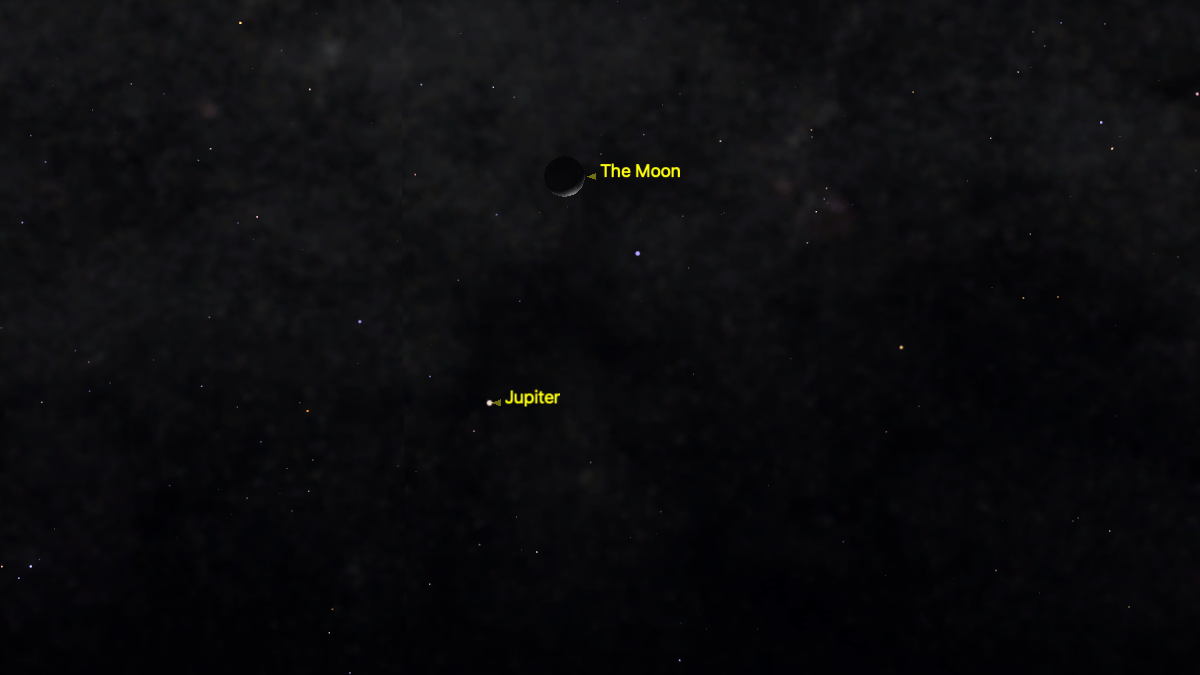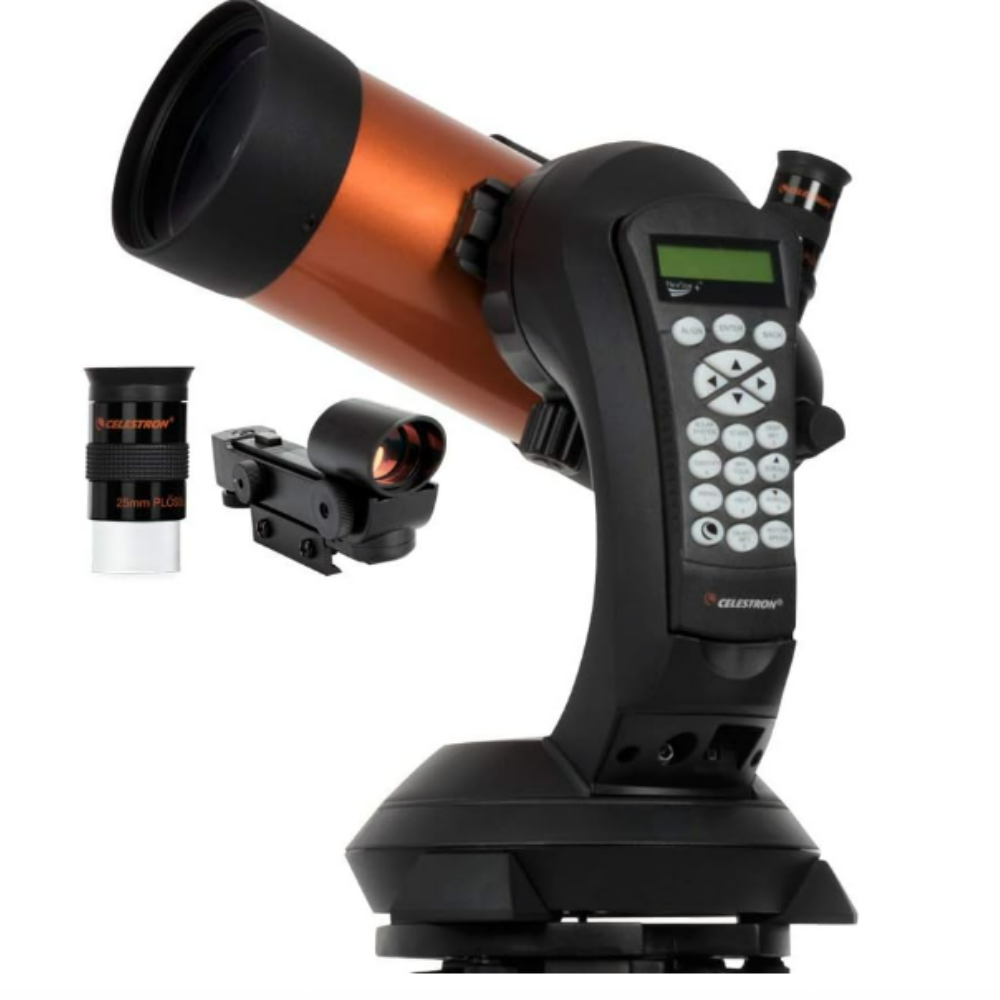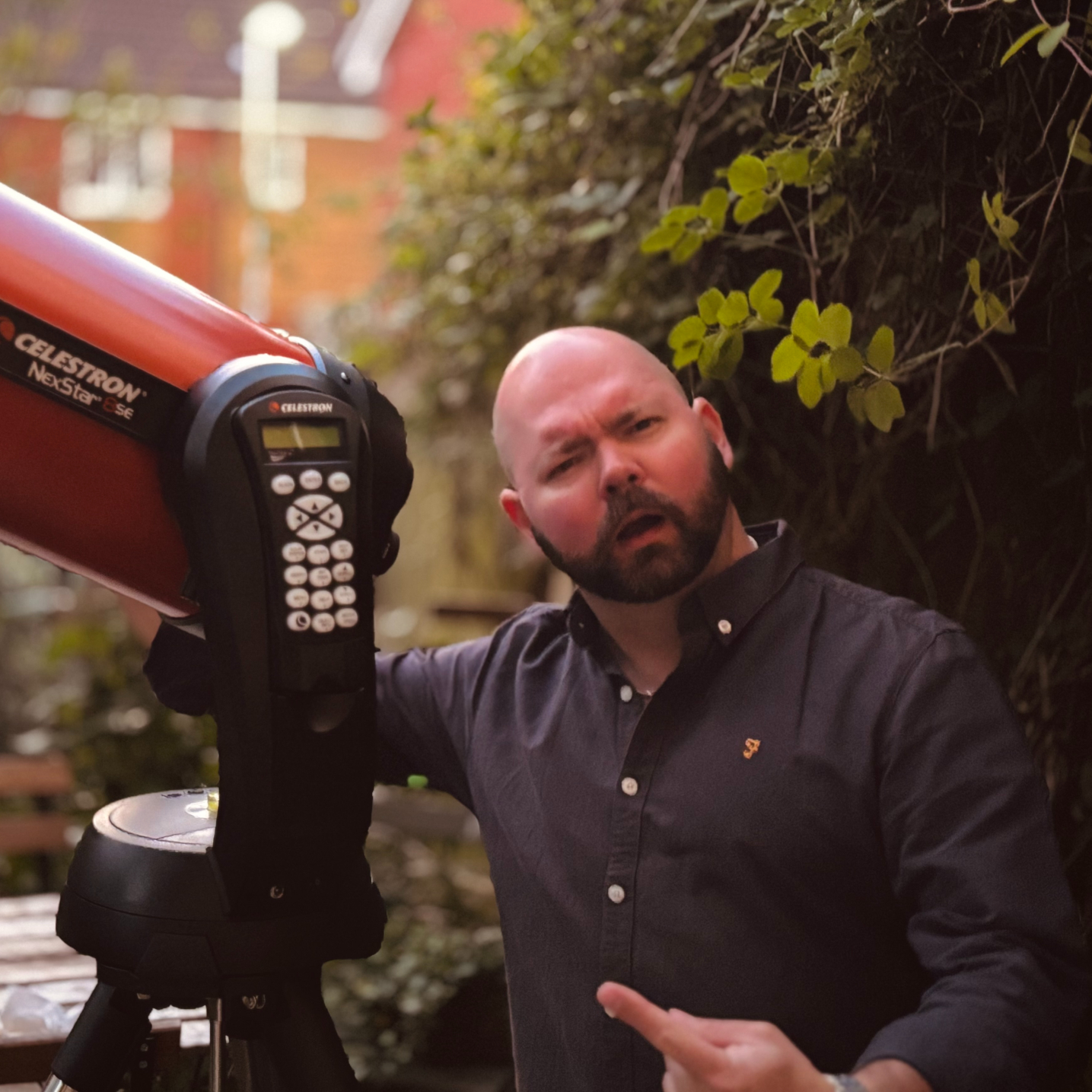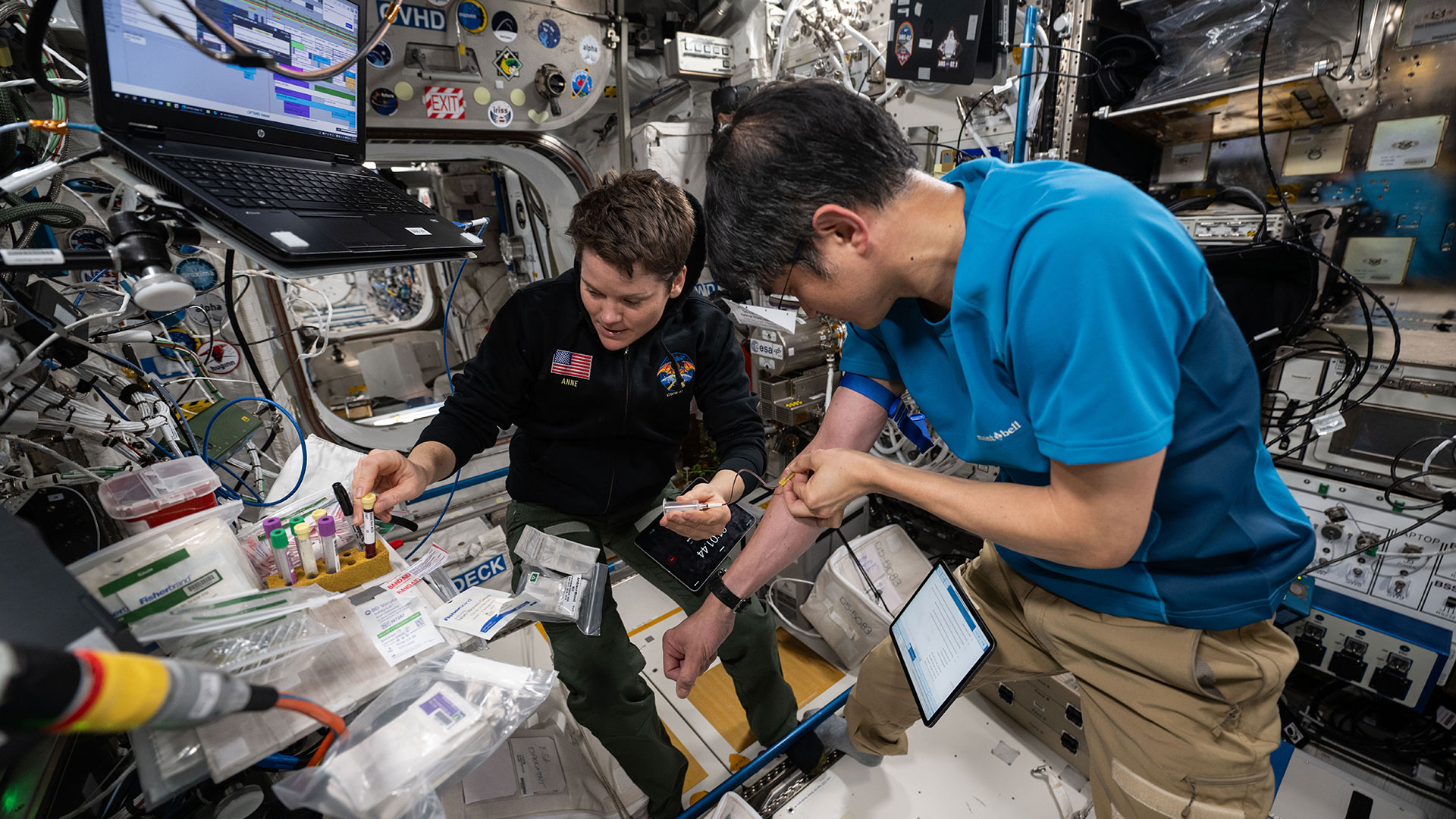See a wafer-thin crescent moon leapfrog Jupiter this week
Simply look to the western sky after sunset.

The delicate form of the crescent moon is set to draw close to the planet Jupiter in the post-sunset sky on April 29, before later making its closest approach to the gas giant from the perspective of Earth on April 30.
Earth's moon is currently emerging from its April 27 new moon phase, during which it passed between the sun and Earth, causing its shadow-drenched disk to be temporarily lost from sight in the sun's glare. In the coming days the moon will form a waxing crescent, which will grow steadily larger in the run-up to its first quarter phase, which will happen on Sunday, May 4.
On the night of April 29, Earth's celestial companion will appear as a slender crescent in the western sky after sunset, with only its most extreme lower right edge directly illuminated by our star's light from the perspective of viewers in the Northern Hemisphere. At this time, Jupiter can be seen as a bright magnitude -1.83 point of light shining in the constellation Taurus to the upper left of the crescent moon, while Mars will be visible higher in the south western sky.
It may be possible at this time to see the shadowed regions of the lunar surface softly lit by sunlight bouncing off Earth's surface onto the (relatively) nearby moon. This phenomenon, known as Earthshine, is capable of revealing the presence of dark features on the lunar surface known as mare, which formed billions of years ago when oceans of lava flows on the still cooling moon solidified to form vast basins of basaltic rock.
The crescent moon is sure to make for a lovely, if fleeting, sight on the night of April 29, when it will be visible for just a few hours in the post sunset sky before slipping below the horizon at around 10:30 pm EDT for skywatchers in New York.
The pair will be easier to spot on April 30, when the moon jumps to the upper right of Jupiter in the western sky. The moon is set to make its closest approach to Jupiter at 12:54 EDT (1654 GMT), at which point there will be just a little over 5 degrees separating the two bodies in the sky, according to the stargazing site in-the-sky.org.

Want to see the moon or Jupiter up close? The Celestron NexStar 4SE is ideal for beginners wanting quality, reliable and quick views of celestial objects. For a more in-depth look at our Celestron NexStar 4SE review.
While this will occur while the sun is still very much in the sky for viewers in America, the duo will still make for a magnificent view in the post sunset sky. The bright magnitude 1.61 star Elnath - which forms one of the two horns in the constellation Taurus - will serve as a perfect bonus viewing target for the night of April 30, when it will be separated by less than a degree from the moon's shadowed surface.
Get the Space.com Newsletter
Breaking space news, the latest updates on rocket launches, skywatching events and more!
The moon will set progressively later in the runup to its first quarter phase, while Jupiter will set around three minutes earlier each night throughout May.
Interested in exploring the solar system for yourself? Our guides for the best binoculars deals and the best telescope deals now can help. Our guides on the best cameras for astrophotography and best lenses for astrophotography can also help you prepare to capture the next skywatching sight.
Join our Space Forums to keep talking space on the latest missions, night sky and more! And if you have a news tip, correction or comment, let us know at: community@space.com.

Anthony Wood joined Space.com in April 2025 after contributing articles to outlets including IGN, New Atlas and Gizmodo. He has a passion for the night sky, science, Hideo Kojima, and human space exploration, and can’t wait for the day when astronauts once again set foot on the moon.
You must confirm your public display name before commenting
Please logout and then login again, you will then be prompted to enter your display name.
